With the performance aftermarket kicking into high gear in the last few years, Callies Performance Products is busier than ever these days just trying to keep up with demand. Callies’ sales manager, Brook Piper, calls it “organized chaos” at times. It’s a good problem to have in the crankshaft business.
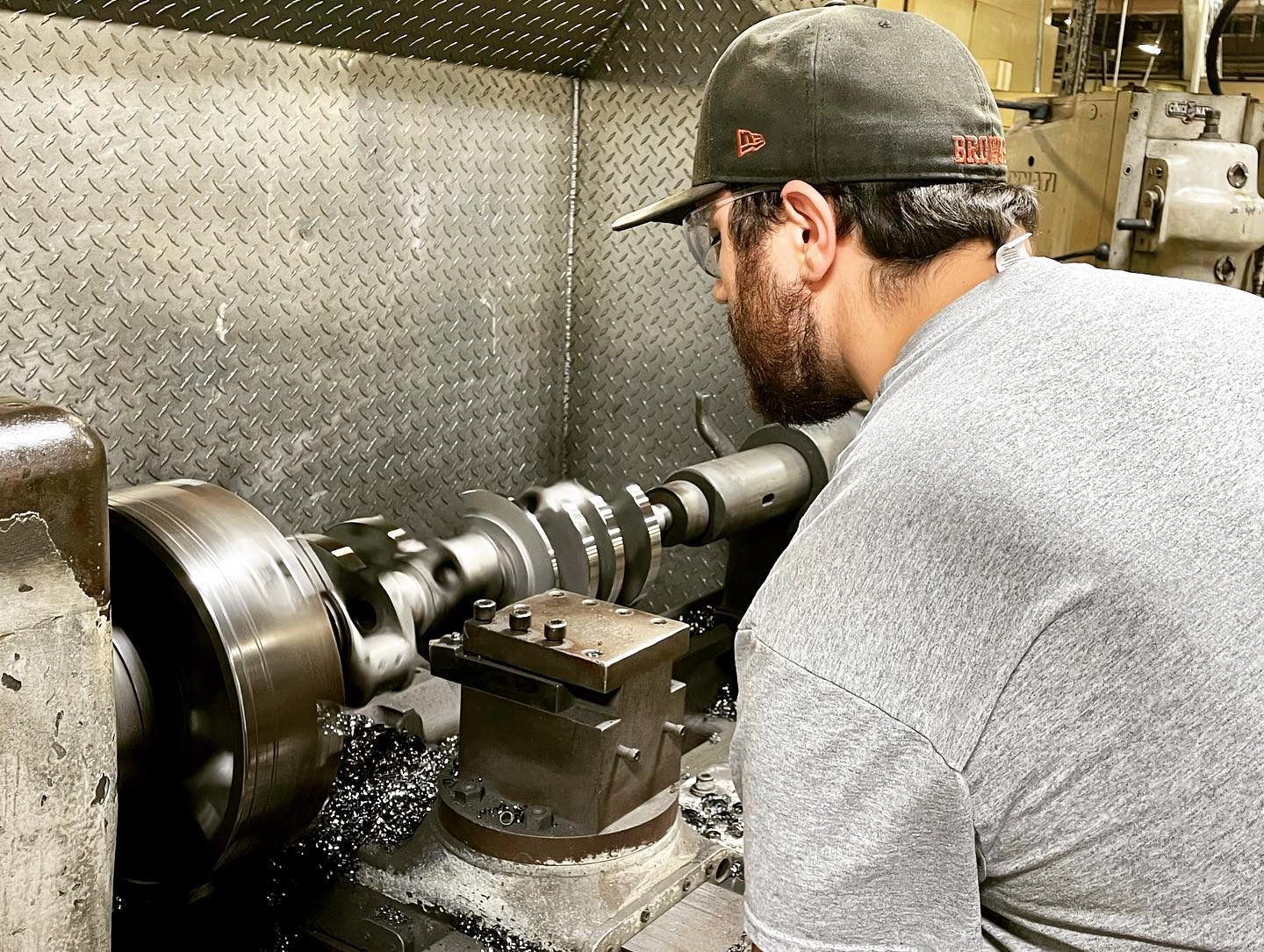
Much of the work Callies does at its headquarters in Fostoria, Ohio is servicing professional race teams’ needs during the season. But they also finish a lot of street performance crankshafts to their exacting standards.
Expanding Markets
While many of Callies’ efforts are focused on serving professional racing teams during the race season, Piper notes that the street performance market has come into its own since the pandemic.
“There are a lot more budget builds going on since the pandemic,” says Piper. “Enthusiasts who had project cars sitting around for years suddenly had time and money to finish them. Most of them were not show cars by any means, but they were spending money to finish a dream car.”
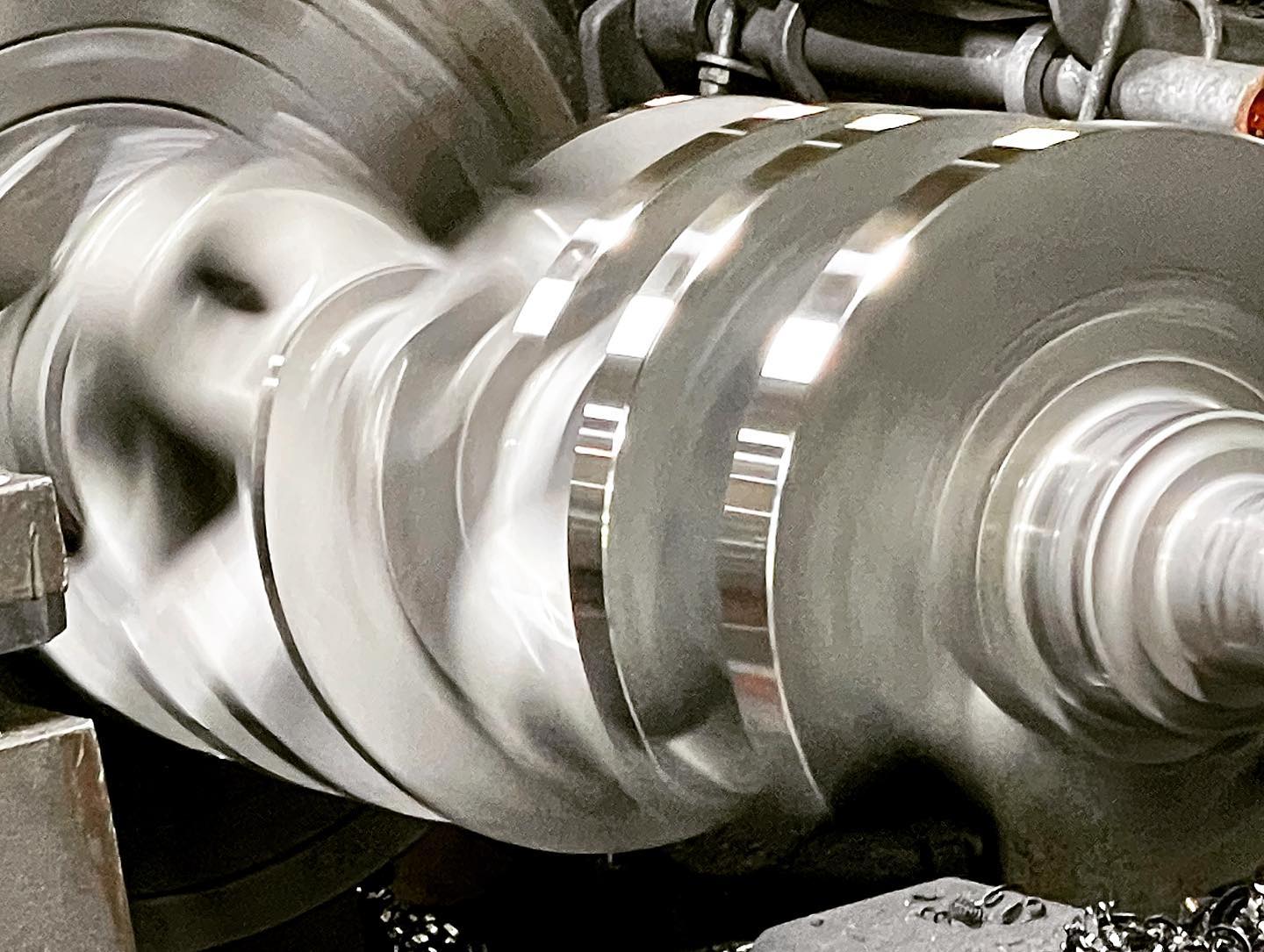
With all of the equipment in-house to balance cranks and rotating assemblies, you can get components balanced to your specific bob weights before they are shipped out to you.
Piper says that Callies initially benefited from people working (or not) from home, but the demand has continued even with things going back to semi-normal. “We are just swamped keeping up with orders and building new crankshafts right now,” says Piper.
The most significant difference is that Callies has expanded from the core-enthusiast type products with Compstar to more pure racing products with its Ultra Billet and forged line of crankshafts.
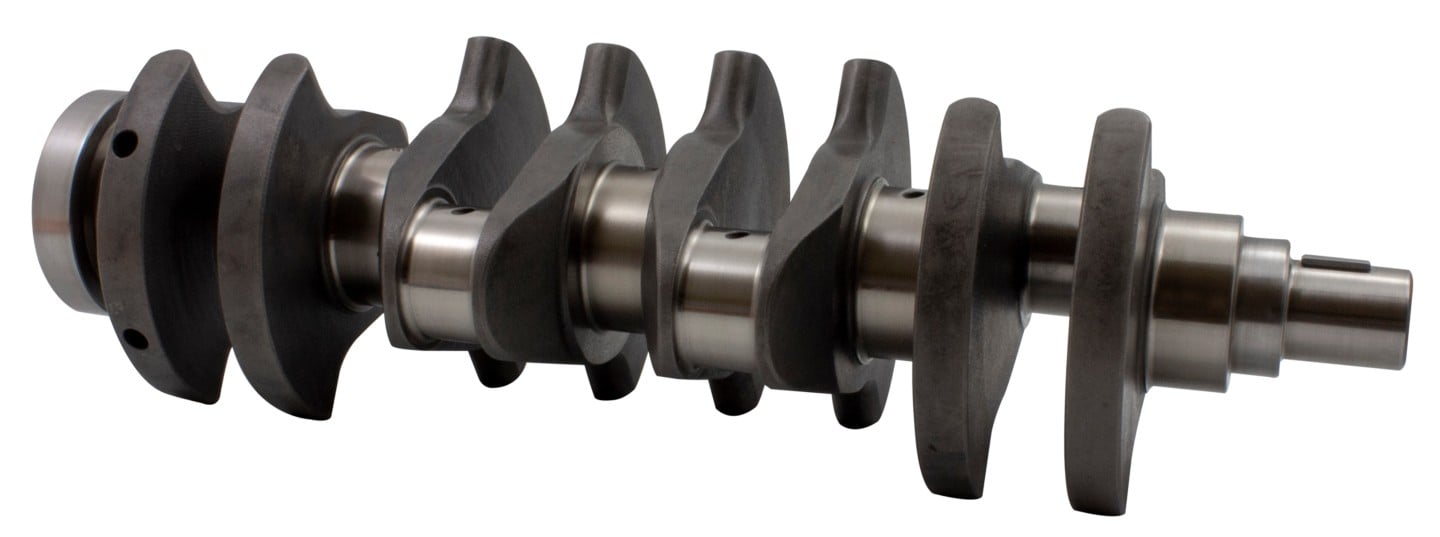
Callies’ Compstar line has taken off since the pandemic, as more hot-rodders than ever are finishing their project cars.
“We’re like Burger King,” Piper quips about the company’s new direction. “You know, have it your way… We have added a lot more products and can finish them in many different ways. But we are starting to focus more on high-end racers and the racing market because they have the strongest demand for billet crankshafts.”
What keeps the shop so busy is manufacturing high-end crankshafts and doing the multi-point inspections and metallurgical testing at its headquarters in Fostoria, Ohio. While the Compstar line is manufactured overseas with Callies tooling and quality control, they still inspect each component back in Ohio and test the metal samples to ensure the quality is there. It’s the same standards the company sets for its high-end billet manufacturing.
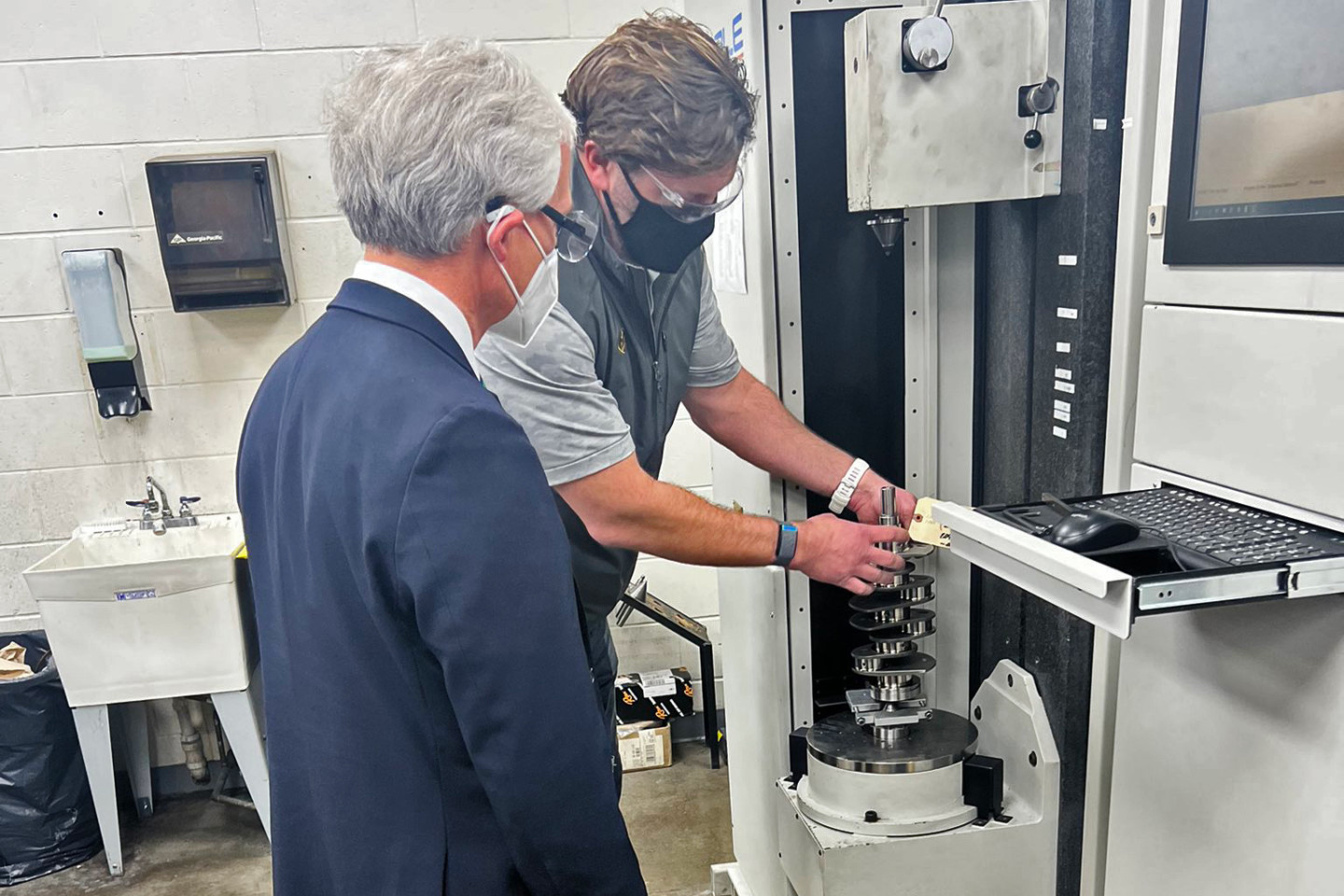
Callies recently hosted Ohio Congressman Bob Latta, where they demonstrated the capabilities of their state-of-the-art facility, showing what made in the USA is really about.
A Balancing Act
Callies is also busy building hand-selected and balanced rotating assemblies. It saves the home-builder from having to go to a balance shop, and all the parts are hand-picked for the most evenly matched weights. In the end, it saves the customer money and time. But there are still price shoppers who will look to save every last nickel, even if they don’t save anything on the total cost of the build.
“We get guys who call and want a quote on a rotating assembly,” says Piper. “But they want the part numbers to shop around for the rock bottom price on the internet.”
According to Piper, most customers can see that saving a few bucks here or there from unknown sources is not worth the hassle. “We’ve been offering fully balanced rotating assemblies for many years. It is just a lot easier to order everything in one place. We also have experience with many combinations, so we know, better than most, what will work in specific applications.”
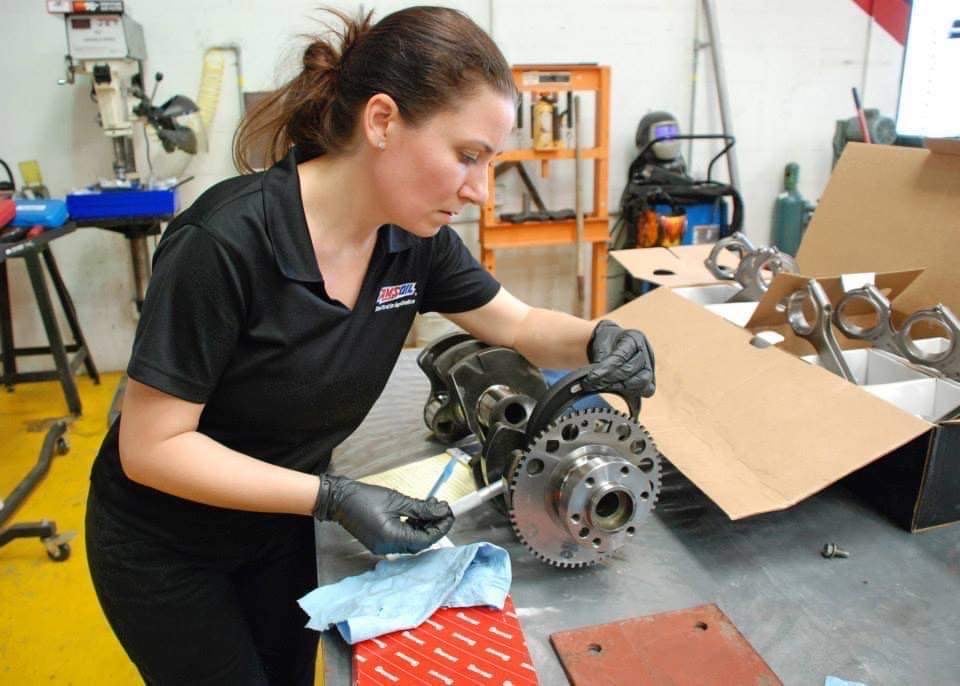
A Powertech Performance employee measuring the crankshaft for a rotating assembly. Whether it’s a Compstar crank or an Ultra Billet offering, they undergo the same stringent quality control, so that when the customer gets their parts, measuring it is merely a formality.
Piper says they offer a selection of crankshafts for the LS from the Compstar line to Ultra Billet. While the LS is hot right now, he notes that the LT platform is likely the next big thing for the aftermarket.
Callies Ultra billets are machined from premium-grade Timken alloy steel. The proprietary steel makes them one of the strongest crankshafts in the industry. The company continues to expand its selection of products for a variety of popular engines. “Any main journal, rod journal, post configuration, stroke, or any other custom characteristic that you may require, we can build it,” says Piper.
Our Aero-Shed super finish creates a stress-riser-free crankshaft and is incredibly aero efficient. When the Ultra-Shed and Aero-Shed processes are combined, the result is a crankshaft with the lowest coefficient of drag in the industry. – Brook Piper, Callies
Callies Ultra Billet crankshafts are truly custom-made to match each project. The Ultra Billet crankshaft is machined with its Ultra-Shed counterweight profiles, and the leading edge profile gently moves oil away from the oncoming counterweight. In contrast, the directional trailing edge directs oil away from the oncoming rod journal. Combine that with the Aero-Shed surface finish, and you have a seriously slick crankshaft.
Callies’ Compstar line is made from 4340 steel that is deep nitrided for strength and wearability. Its LSX crankshafts are fully counterweighted for enhanced bearing load distribution, allowing these shafts to withstand both high-boost and high-RPM applications. Machined with large journal radii, gun-drilled mains, and fully lightened rod journals, the Compstar LSX crankshaft is built with performance in mind. You can order the crankshafts with a rough balance (1,785 grams for LSX) or have them finish-balanced to your specific bob-weight.
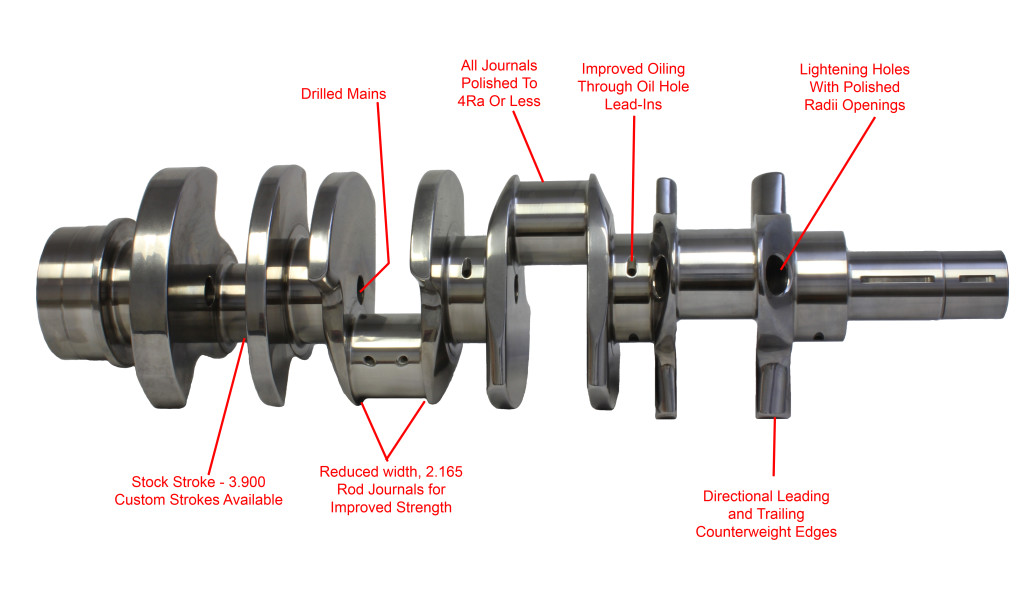
One of the company’s newest additions is a Duramax Diesel crankshaft. The performance diesel market is growing, and many of the stock cranks are not up to handing the brute power these engines can make.
One of Callies’ newest cranks is for the GM Duramax diesel engine. These are designed for performance diesel builds and offer improved balance, increased counterweight angles, diameters, and thickness for overall increased stiffness. All Callies Duramax crankshafts are machined from triple-heat-treated 4330v steel before receiving the firm’s Perma-Case nitride. The Duramax crankshafts will accommodate bearing inserts commonly available for GM Duramax engines.
These cranks are finely tuned to offer minimum reciprocating weight without sacrificing strength. Torsional fatigue is minimized with strength-enhancing pin arms. The counterweights are reduced in radial-width to reduce weight but, at the same time, do not sacrifice balance characteristics.
Callies also offers a complete line of cranks designed for the import tuner crowd, expanding on its diversity quotient. All SS (Sport Series) crankshafts are finished with the same care and detail as the entire line of Compstar crankshafts and come balanced and ready for assembly.
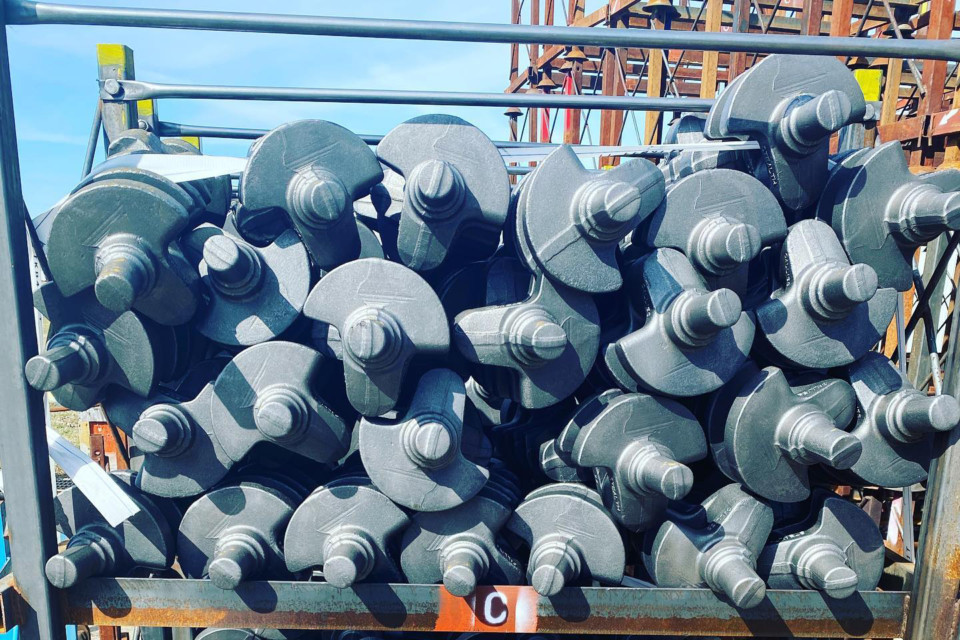
A batch of forgings is ready to be finished at Callies. These “cranks-in-the-raw” are Magnum BBC cranks.
For the Stock Eliminator category, a Callies’ crankshaft is built to the exacting requirements of the class. These cranks are machined from Callies 4340 forgings and are durable enough to provide years of trouble-free service. Both 3.773-inch or 4.013-inch strokes will tip the scales at an OEM equivalent of 67 pounds. These crankshafts are produced with standard BBC rod and main journal diameters.
With OEMs coming out with bigger crate engines, like Ford’s 7.3L Godzilla and GM’s 1,000-horsepower ZZ632, they have laid down the gauntlet in recent years. The aftermarket is now challenged to keep up with the big-horsepower offerings. “When the OEs are pumping out engines with 700 to 800 horsepower, we always have to go a step or two further,” says Piper.



